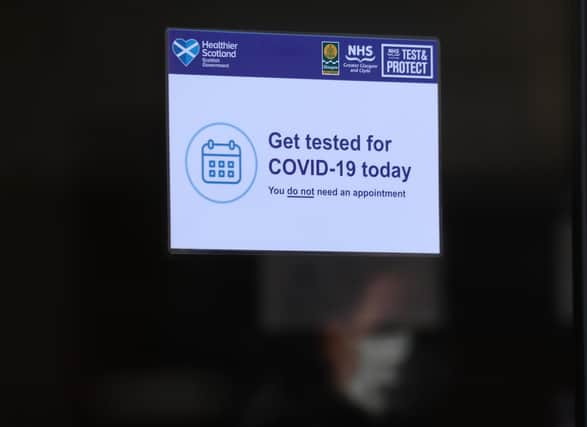What are the differences in self-isolation exemptions between Scotland and England?


Despite previous issues on Covid-19 policy, the two schemes are broadly speaking the same whether you are north or south of the border.
Which sectors?
Both countries will see the rules applied to a narrow group of “critical" sector workers, and the exemptions will not apply to most or even the majority of workers in businesses within these sectors.
Advertisement
Hide AdAdvertisement
Hide AdThe sectors include energy, civil nuclear, digital infrastructure, food production and supply, waste, water, veterinary medicines, essential chemicals, essential transport, medicines, medical devices, clinical consumable supplies, emergency services, border control, essential defence outputs, and local government.
Both governments are working from the definition of ‘Critical National Infrastructure’, whereby a worker’s absence would likely lead to the “loss or compromise” of key infrastructure, resulting in a “major detrimental impact on the availability, integrity or delivery of essential services – including those services whose integrity, if compromised, could result in significant loss of life or casualties”, or “significant impact on national security, national defence, or the functioning of the state”.
Who is exempt?
In England, only workers who are fully vaccinated with two weeks since their second dose will be exempt from self-isolation if they are identified as close contacts.
In Scotland workers who would be exempt must also be asymptomatic, in possession of a valid vaccination record, have evidence of a negative PCR test, and return a negative lateral flaw test for up to 10 days after exposure, as well as comply with PPE requirements.
Scottish employees will also be asked to not self-isolate on a voluntary basis, rather than it being a requirement, meaning businesses will not be able to force workers to go to work if they may previously be self-isolating.
If you test positive for Covid-19, however, the exemption will not apply.
There will be different rules for health and social care workers, the Scottish Government said.
How do businesses apply?
Scottish and English businesses will need to use a similar application process in order to be eligible.
Advertisement
Hide AdAdvertisement
Hide AdCompanies will need to demonstrate in their application to the Scottish Government how self-isolation is impacting their work, how they are attempting to mitigate this impact already, what might happen if no action is taken, how many staff will need to be exempt, and details of any ongoing outbreak management
In England, a similar process will be undertaken with self-isolation exemptions only possible if employers have a letter with the exempt workers specifically named, otherwise the policy does not apply.
How long will this last?
In both England and Scotland there is an acceptance that this is a short-term fix to a short-term problem.
The applications are intended to be “temporary” in Scotland and only used when there is an “immediate risk to business or service continuity”.
Nicola Sturgeon has said that mid-August will see a move away from mandatory self-isolation for close contacts, should they be double-jabbed, and a move towards a ‘test and release’ system.
The UK Government state that the rules will change on August 16 when a similar policy will come into force.
A message from the Editor:
Thank you for reading this article. We're more reliant on your support than ever as the shift in consumer habits brought about by coronavirus impacts our advertisers.
If you haven't already, please consider supporting our trusted, fact-checked journalism by taking out a digital subscription.
Comments
Want to join the conversation? Please or to comment on this article.